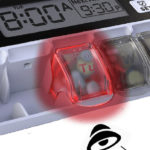Alzheimer’s Tips to help Caregivers
Alzheimer’s Tips to help Caregivers
[mpsl slider5adb952c284b0]
What is Alzheimer’s
- Alzheimer‘s is a progressive disease, where dementia symptoms gradually worsen over a number of years. In its early stages, memory loss is mild, but with late-stage Alzheimer’s, individuals lose the ability to carry on a conversation and respond to their environment.
to Make Sure the Person Eats Well
In the later stages of Alzheimer’s disease, many people lose interest in food. You may begin to notice some changes in how or when the person eats. He or she may not be aware of mealtimes, know when he or she has had enough food, remember to cook, or eat enough different kinds of foods. This means the person may not be getting the foods or vitamins and mineralsneeded to stay healthy.
Here are some suggestions to help the person with late-stage Alzheimer’s eat better. Remember that these are just tips. Try different things and see what works best for the person. You might try to:
- Serve meals at the same time each day.
- Make the eating area quiet. Turn off the TV, CD player, or radio.
- Offer just one food at a time instead of filling the plate or table with too many things.
- Use colorful plates so the person can see the food.
- Control between-meal snacks. Lock the refrigerator door and food cabinets if necessary.
- Make sure the person’s dentures are tight fitting. Loose dentures or dentures with bumps or cracks may cause choking or pain, making it hard to eat. Take poorly fitting dentures out until the person can get dentures that fit.
- Let the doctor know if your family member loses a lot of weight, for example, if he or she loses 10 pounds in a month.
Here are specific suggestions about foods to eat and liquids to drink:
- Give the person finger foods to eat such as cheese, small sandwiches, small pieces of chicken, fresh fruits, or vegetables. Sandwiches made with pita bread are easier to handle.
- Give him or her high-calorie, healthy foods to eat or drink, such as protein milk shakes. You can buy high-protein drinks and powders at grocery stores, drugstores, or discount stores. Also, you can mix healthy foods in a blender and let the person drink his or her meal. Use diet supplements if he or she is not getting enough calories. Talk with the doctor or nurse about what kinds of supplements are best.
- Try to use healthy fats in cooking, such as olive oil. Also, use extra cooking oil, butter, and mayonnaise to cook and prepare food if the person needs more calories. If the person has heart disease, check with the doctor about how much and what kinds of fat to uElimination diet pointers before you startse.
- If the person has diabetes or high blood pressure, check with the doctor or a nutrition specialist about which foods to limit.
- Have the person take a multivitamin—a tablet, capsule, powder, liquid, or injection that adds vitamins, minerals, and other important things to a person’s diet.
- Serve bigger portions at breakfast because it’s the first meal of the day.

What to Do About Swallowing Problems
As Alzheimer’s disease progresses to later stages, the person may no longer be able to chew and swallow easily. This is a serious problem. If the person chokes on each bite of food, there is a chance that the food could go into the lungs. This can cause pneumonia, which can lead to death.
The following suggestions may help with swallowing:
- Make sure you cut the food into small pieces, and make it soft enough to eat.
- Grind food or make it liquid using a blender or baby food grinder.
- Offer soft foods, such as ice cream, milk shakes, yogurt, soups, applesauce, gelatin, or custard.
- Don’t use a straw; it may cause more swallowing problems. Instead, have the person drink small sips from a cup.
- Limit the amount of milk the person drinks if it tends to catch in the throat.
- Give the person more cold drinks than hot drinks. Cold drinks are easier to swallow.
- Don’t give the person thin liquids, such as coffee, tea, water, or broth, because they are hardest to swallow. You can buy Thick-It® at most pharmacies. You add Thick-It® to liquids to make them thicker. You also can use ice cream and sherbet to thicken liquids.
Here are some other ideas to help people swallow:
- Don’t hurry the person. He or she needs time to chew and swallow each mouthful before taking another bite.
- Don’t feed a person who is drowsy or lying down. He or she should be in an upright, sitting position during the meal and for at least 20 minutes after the meal.
- Have the person keep his or her neck forward and chin down when swallowing.
- Stroke (gently) the person’s neck in a downward motion and say “swallow” to remind him or her to swallow.
- Find out if the person’s pills can be crushed or taken in liquid form.
Helping the person with Alzheimer’s eat can be exhausting. Planning meals ahead and having the food ready can make this task a little easier for you. Also, remember that people with Alzheimer’s disease may not eat much at certain times and then feel more like eating at other times. It helps to make mealtime as pleasant and enjoyable as possible. But, no matter how well you plan, the person may not be hungry when you’re ready to serve food.



